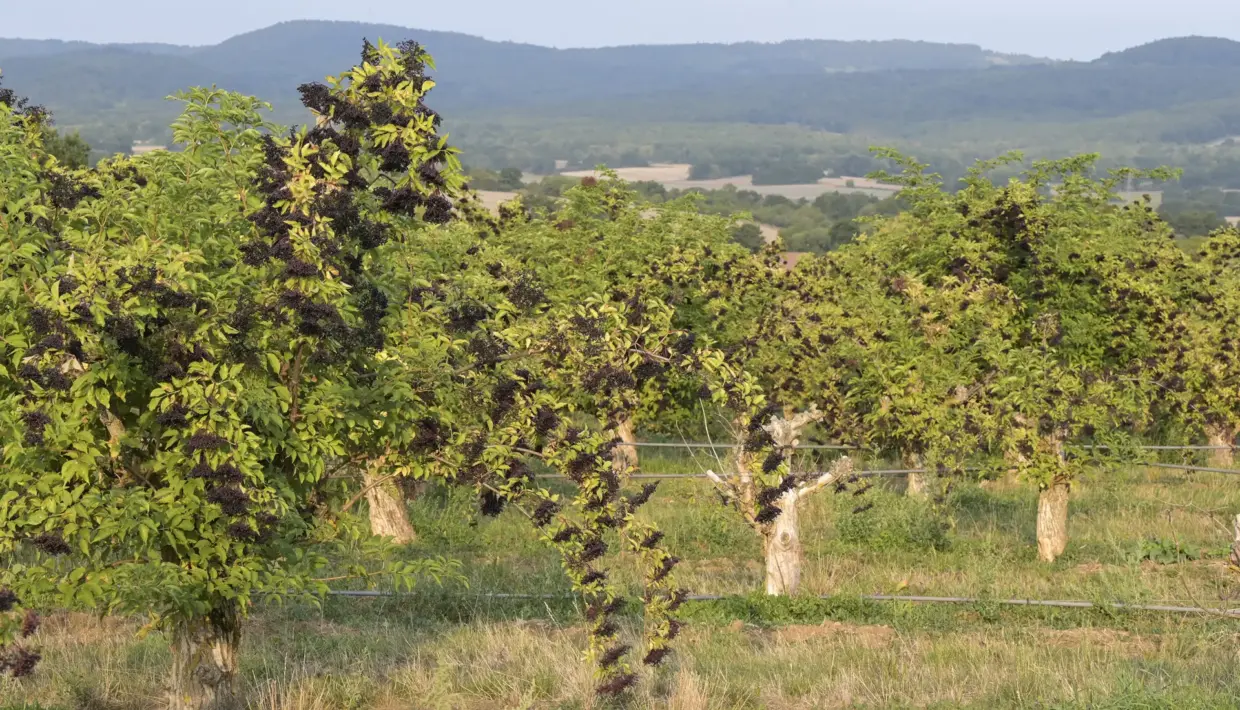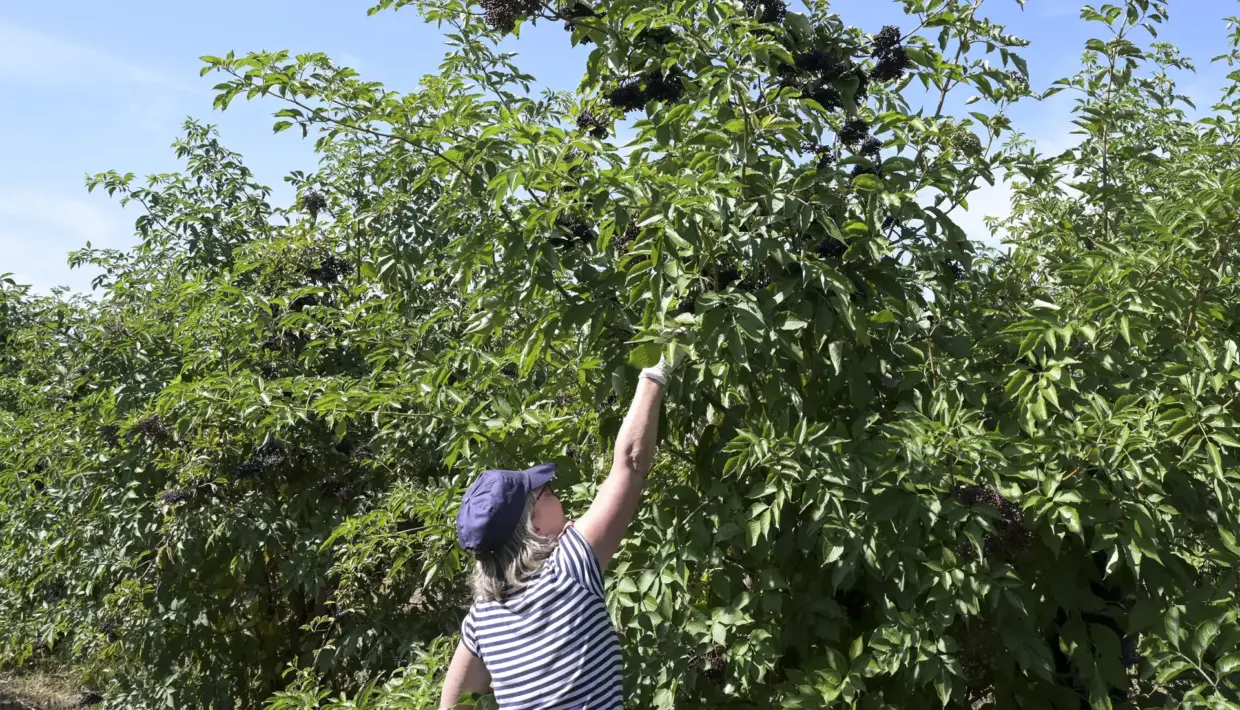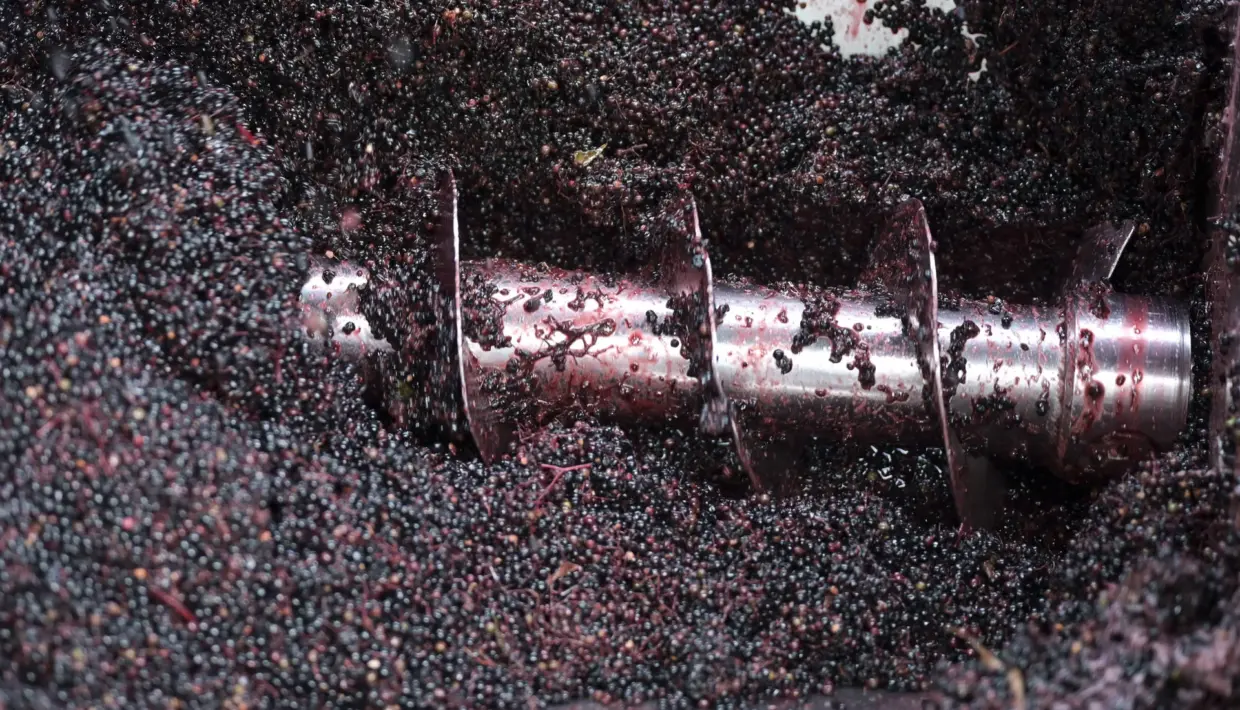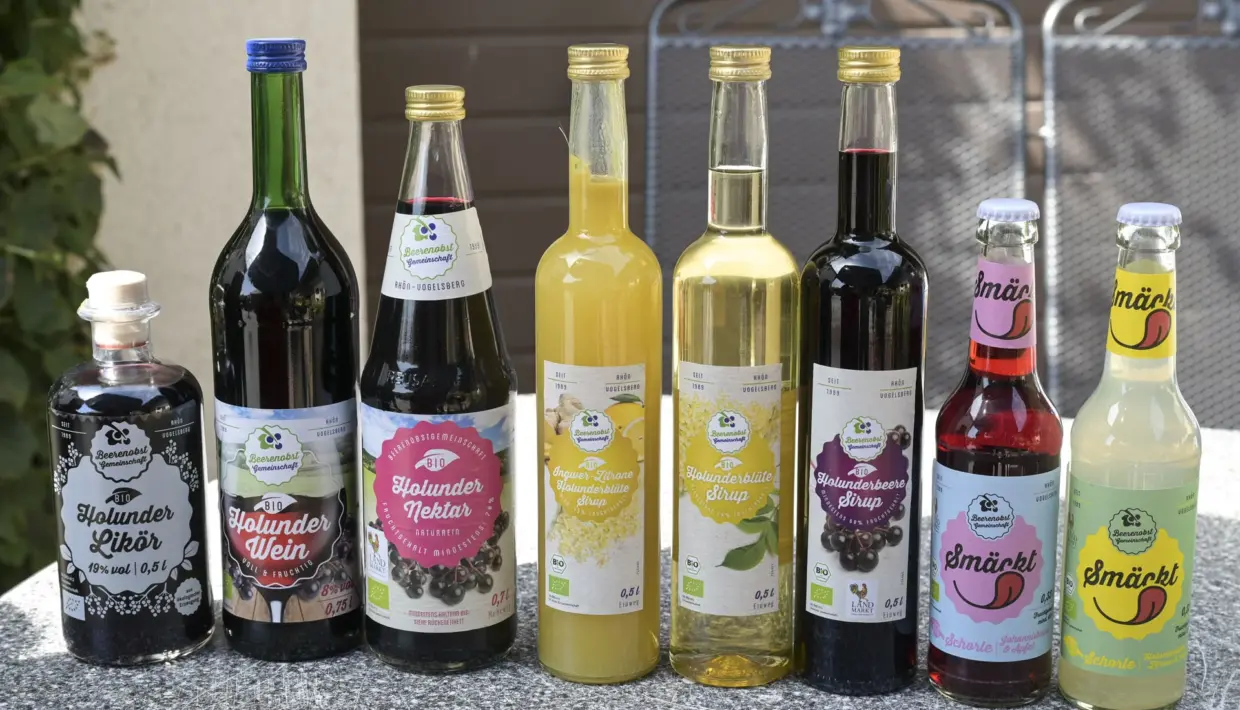If you have a farm in a location like Neuhof-Tiefengruben in the Hessian Rhön region, you can’t make ends meet with run-of-the-mill methods. You have to break new ground, be versatile and specialise.
This is exactly what the Reith family did when they started growing elderberries 14 years ago. This berry fruit is cultivated by five other growers in the region, who have come together to form Beerengemeinschaft Rhön-Vogelsberg GmbH to have it processed and marketed collectively. Around 22ha of elderberries are currently grown on the member farms, two hectares of which are on the farm of Annemarie and Willi Reith and their daughters Kerstin and Stefanie.
Family, neighbors and friends join the harvest
When the elderberry harvest is due in August or early September, the harvest crew is notified via WhatsApp: The whole family, in-laws, neighbours and friends then meet at the organic-certified farm just outside the village. On this sunny August day, the harvesters use secateurs to separate the lusciously hanging fruit from the branches. The chattering in harmonious company becomes livelier as the last elder tree to be harvested -which is less than four metres high – gets closer.
Kerstin Oswald is right in the middle of the harvest and seems happy with the haul. “The quality is very good this year and the quantity is average”, says the 37-year-old. She will soon take over the 25ha mixed farm on her parents’ land.
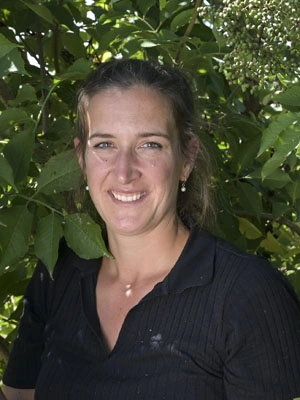
The quality is very good this year.
Kerstin Oswald
Diversity with berries, pigs, cattle, calves, millet and miscanthus
Diversity is key: In addition to elderberries, currants also thrive on the family’s land, some of which they have leased in addition to their 25ha. They also raise 50 pigs for market, keep just under a dozen Wagyu cows, rear calves for a dairy farm, grow millet for a biogas plant and, in addition to conventional grain crops, have a small patch of miscanthus which they supply to a horse owner for bedding.
Yield of around 20 tons of elderberries on 2 hectares
Kerstin estimates that around 20t of elderberries will be harvested this year before the third and final picking of the season. Elderberries, some of which were harvested in spring and processed into drinks, therefore represent an important source of income for this versatile farm, which is cut off from areas to the east of the transport axis by the nearby motorway 66.
However, the amount of work involved in this nutritionally valuable fruit is enormous. “To control the elderberry’s biggest enemy, the vole, the roots are wrapped in chicken wire,” explains Willi. “We also cultivate the soil several times a year to deter the mice and to keep grasses and herbs short.”
We also cultivate the soil several times a year to deter the mice and to keep grasses and herbs short
Willi Reith

However, the main crux of the work comes in winter, when the Reiths carefully prune the elder trees (sambucus nigra). “You have to go around the same tree several times to finally get the pruning right,” says Willi. They even use the trimmings, which end up in the farm’s own woodchip heating system.
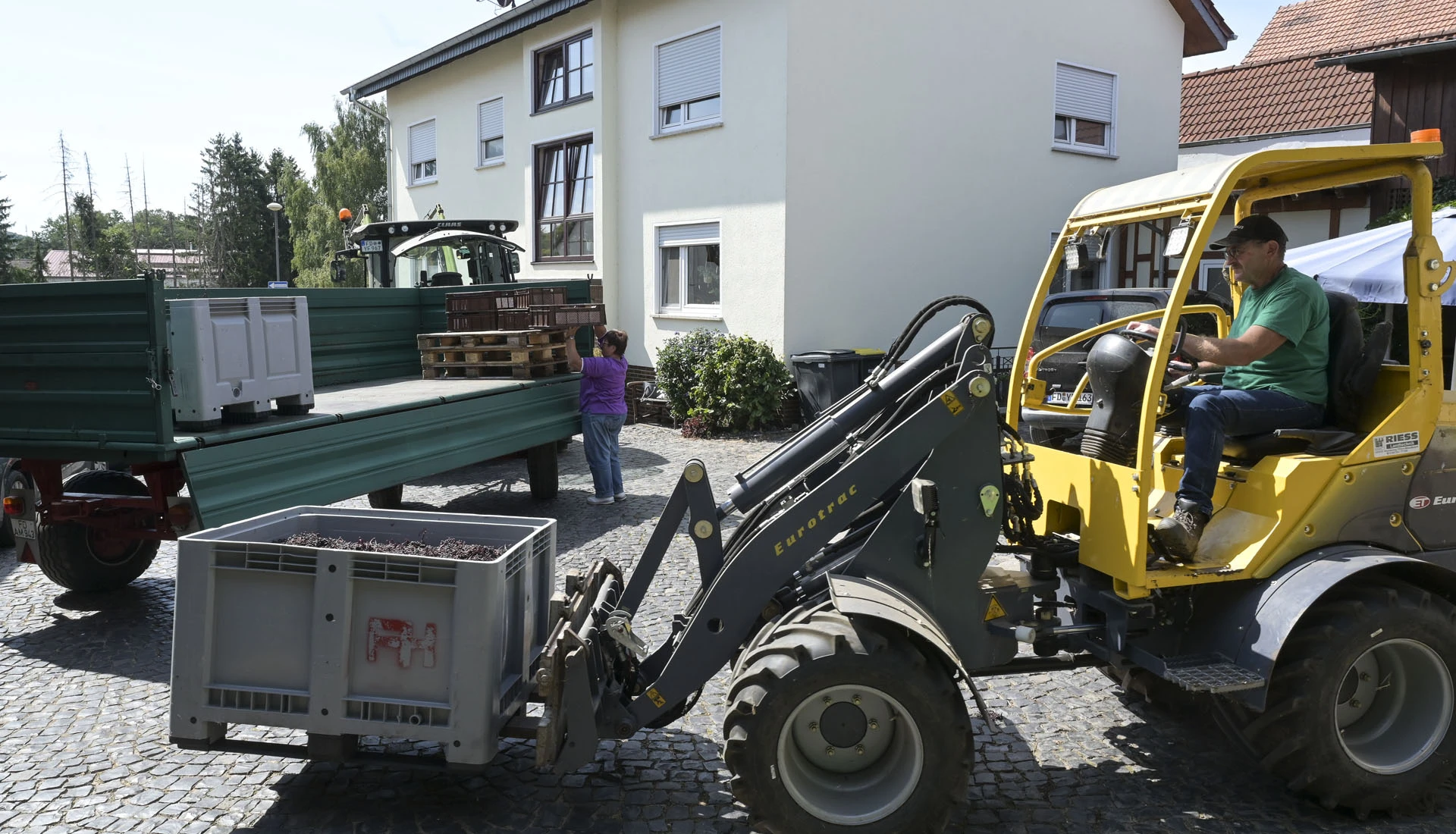
From elderberry to pure juice
The Beerengemeinschaft Rhön-Vogelsberg GbR was originally established to jointly market currants as a colouring agent for the chemical industry. However, nothing came of it. Later, elderberries were added, which are processed into seven products (including 100% fruit juice and nectar) at the nearby BioContor Elm GmbH press. Most of this goes to the food retail trade, while a smaller amount is marketed at local markets and in farm shops.
For many years, the press also destemmed and processed elderberries from other businesses in the Rhön, which then ended up at the Bionade production facility in Ostheim in the Bavarian Rhön. Although the press no longer works for Bionade and focuses more on “exciting new developments” with a full order book, the red Bionade helped make Rhön one of the main elderberry growing regions in Germany. According to the Federal Statistical Office, exactly 354ha of elderberry were cultivated nationwide in 2024.

